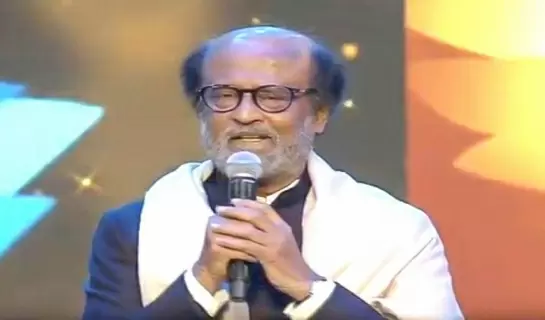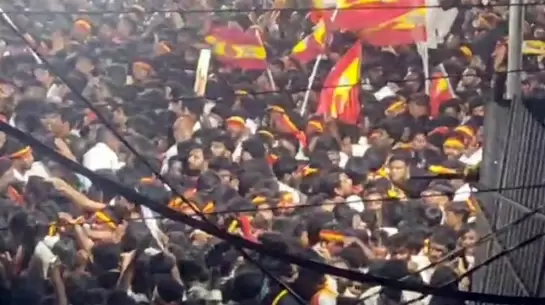Well-run night schools can prove to be a boon to thousands of poor women

22-March-2013
Vol 4 | Issue 12
The night is a space that is associated with darkness and danger. It is not a space that women are normally allowed to occupy. Who are the women who venture out into Mumbai’s night schools, and what drives them?
If you believe that space is a neutral, apolitical thing, think again.
 |
|
The night schools of Mumbai have managed to survive for over 100 years (Photo: Infochange News & Features)
|
Who gets access to which space and when has always been determined by one’s position in society. Exclusion from a space is not coincidental but cultural and political.
In a Hindu, upper-caste, upper-class, male-dominated country like India, accessibility to the public space is determined from the time of one’s birth.
The night as a space is associated with darkness, evil and danger. It is that time of day when the weak and vulnerable need special protection.
Women, as one of the most vulnerable sections of society, have been protected during the night by being locked indoors. The demands of a modern, capitalist, globalised society may have caused the leash to be loosened, but the freedom is conditional. Women may be allowed to step out into the nocturnal public space only if they display legitimate reason.
Who is the woman who is not allowed to be out after dark? Which woman is deemed worthy of protection? And what gives women the legitimacy to be out in the dark?
Yamuna Ramakanth Dalvi, a 43-year-old student of Modern Night School, Mumbai Central, says: “I am not afraid to go out at night. After all, I am not out for fun. Besides I am a Shiv Sena worker so nobody would even dare touch me. One phone call to our boys (the Shiv Sena youth) and the person who dares to touch me will pray for his life.”
Women, even those with limited access to public space, are thus seen as unnatural occupants or outsiders to the night space, needing protection and a legitimate reason to be out there.
In recent times the women’s movement has fought for women’s access to public space, including public space at night.
The Reclaim the Night movement, for instance, started in the late-1970s. It involves large numbers of women coming into the public space and reclaiming the roads at night.
A young feminist who has participated in Take Back the Night marches says: “The ideology behind the movement is not just to protest against the growing sexual violence against women but to also protest the protectionist attitude that imposes curfews on them. The movement seeks to empower women to combat the violence against them and address their fears about places which are said to be dangerous for them.”
***
The night schools of Mumbai, which have managed to survive for over 100 years, are one nocturnal space that women manage to access in their quest to get themselves an education.
Night schools cater to the educational needs of young adults who work during the day and cannot attend day school. They began with the advent of industrialisation, says Nandani Manjrekar, a Professor of Education at the Tata Institute of Social Sciences, Mumbai.
In Maharashtra too, night schools have historically catered to the working classes. Ganesh Naik, a social worker who has researched the history of night schools, writes that the modern education introduced in India by the colonialists reached only the middle classes, not the lower classes and castes who were engaged in manual labour and petty jobs.
Mahatma Jyotirao Phule realised the importance of education and opened up night classes for lower-caste, lower-class people, in 1855. Phule also educated his wife Savitribai so she could take education to women.
As Bombay became a hub for textile mills in the 1850s, there was an influx of working class migrants to the city. According to a souvenir released by the Night Schools Headmasters’ Association, on the occasion of its golden jubilee, the earliest formal night school for mill workers can be traced back to 1876.
Bhikova Chavan, a social reformer belonging to the Prarthana Samaj, started adult education classes for mill workers and their children under the guidance of the Theistic Association.
Later in 1885, an educationist named Jarturd N Bradley convinced the government to start a government-aided night school in the Girangaon area which supported the majority of mills and mill workers’ housing.
P C Majumdar of the Bramho Samaj established eight night schools to spread education among mill workers in the later part of the 19th century, says Ankush Jagdale, a former headmaster and current trustee of Utkarsh Night High School, Worli, who also works with the Mumbai-based NGO Masoom.
The early-20th century saw the emergence of industrial workers’ resistance movements and trade unions. Several trade union leaders established night schools for the benefit of the workers and their families. The oldest surviving night school in Maharashtra is the Social Service League Night School in Parel, established in 1922 by N M Joshi.
Between 1920 and 1940, night schools flourished not just in Mumbai but also in Pune, Ahmednagar and Vidarbha.
***
Although Phule had laid special emphasis on education for women, his successors do not seem to have carried forward this tradition. While many male night school students have emerged as successful beneficiaries, no female beneficiaries could be traced through the course of this research.
Many male students who have studied in night school have become successful businessmen, restaurant owners, as well as teachers and trustees of night schools. Vishwanath Shenava, who was a student of a night school in the 1960s, confirmed that he has never come across a female night school student.
Arun Khadilkar, who is a retired night school headmaster and currently the president of the Night School Headmasters’ Association, says that in the 1970s there were just a couple of women who studied in night schools. These women were married and older. Unlike their male counterparts they have not stayed in touch with their schools.
Interestingly, in recent times, thanks to the proliferation of private schools, deterioration of night school standards and absence of a proper support system, the number of night schools and students attending them has declined. But the number of female students in these schools has increased.
In 1976-77, government closed down 11 night schools in Maharashtra because they did not meet the norms of attendance and enrolment. The decline has continued.
In 2003, there were 212 night schools; according to the latest figures obtained from the Night Schools Headmasters’ Association, the number of night schools in 2012 was 186, with a total of 14,500 students.
Of these 186, three are exclusively for women while the rest are co-educational. The night schools fall under the Municipal Corporation of Greater Mumbai and are controlled by the Education Inspector, Government of Maharashtra.
Night schools mostly cater to students of the higher secondary classes, that is, classes 8 to 10. These students may or may not have completed primary school. The overall dropout rate in upper primary schools in Maharashtra is 7.58%; it’s higher for girls at 8.44% .
A survey conducted in 15 night schools by this reporter indicated that 35% of students attend night schools because they dropped out or had to start working at an early age.
Khadilkar says that Maharashtra is the only state in which night schools are academically on a par with day schools and have the same curriculum and SSC examination.
While most day schools run for five hours a day, night schools have to complete the same curriculum in three hours, usually from 6.30 to 9.30 pm.
The night schools are operational in five mediums -- Marathi, Hindi, English, Urdu and Kannada. While gender- and caste-segregated data for the total number of students has not been recorded, Khadilkar claims the number of female students has increased.
From a negligible number of female students in the 1970s, the figure is close to 10% of female students today, he says. However, a survey conducted in 15 night schools by Masoom, which works with night schools, indicates that the number of female students is closer to 25%.
This discrepancy could be because the 15 schools surveyed are located in south and central Mumbai, where the enrolment of women may be higher. It could also be because official figures for night schools include a lot of false and invisible enrolment.
The age-group of female students has also come down since the 1970s, with the majority between 15 and 25 years. Ganesh Naik, a social worker who has worked with night schools for the last five years, says that almost 70-80% of students attending night schools come from the scheduled castes.
Night schools are located close to lower-middle class localities throughout Mumbai as well as Maharashtra.
But the women don’t feel safe. They feel secure in a crowd and in groups, but few would dare step out on their own.
Dipali Gambhire, a student at Modern Night School, Mumbai Central, says: “I am not scared to travel late in the night. After all, I am not the only girl on the road. There are many more girls like me.” But she goes on to add: “I don’t travel alone, and I avoid dark, lonely roads.”
The girls of the night schools might travel alone to school at 6 pm, but they make it a point to travel back in groups after 9.30 pm, or take public transport where there are many more people, especially women.
There is a sense of security women feel in the collective. They must be constantly conscious of the time and space they are in. Male students have not articulated such a fear.
The women also said they would prefer to study in a girls’ school rather than a co-ed one, feeling more comfortable with female co-students, teachers and staff.
However, on the positive side, none of the students said they felt any sense of hostility or exclusion in the night schools.
(Ditilekha Sharma has an MA in women’s studies from TISS, and works with an NGO called Masoom.) - Infochange News & Features















